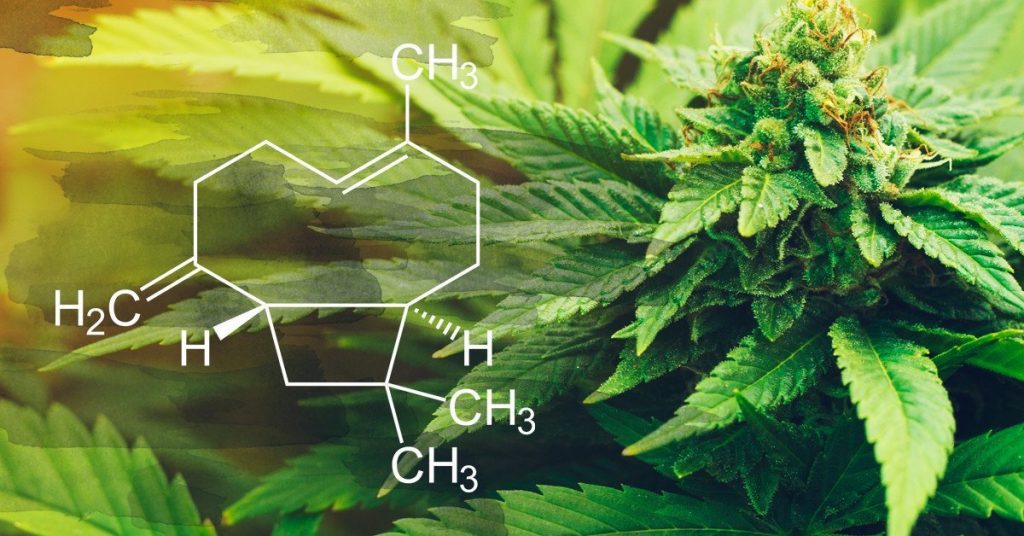
- Cann Society News
-
by ADMIN BKK
Learn everything you need to know about Humulene – a terpene that gives your strain a unique taste and smell.
Consumers of craft beer, specifically IPAs, may perceive a similar olfactory sensation between their favourite brand of brew and the cannabis flowers in their joint or vaporiser. Of the 200 aromatic terpenes that may manifest in a single strain of cannabis, humulene is of note due to the other plants in nature that produce it, including strains of hops used in the brewing of beer.
Terpenes are the molecules in cannabis that deliver a sometimes pungent aroma and that have been discovered to provide significant medical efficacy.
The three main medical benefits of terpenes are its anti-cancer properties, the reduction of systemic inflammation, and its significant role as an analgesic (pain killer).
More than 20,000 terpenes exist throughout nature.

Humulene, also known as alpha-caryophyllene or a-humulene, derives its name from the Latin Humulus Lupulus, which translates to “hops” in English. This terpene, like others, when consumed as a potent isolate carries the risk of irritation if inhaled and when it comes into contact with skin. Strains rich in this terpene include GSC (formerly Girl Scout Cookies), Headband, Skywalker OG, Super Lemon Haze, and White Widow.
The Details of Humulene
Strains of cannabis rich in humulene emit a “hoppy” aroma reminiscent of basil, clove, ginseng, hops, and sage. Like many other terpenes, this molecule is flammable and utilized in industrial applications as an insecticide.

The medical efficacy of this major terpene includes its role as an anti-inflammatory, analgesic (pain killer) and anti-tumor (anti-cancer). It even provides antibacterial properties. It also helps wounds to heal and may play a role in weight management.
Humulene serves as both a powerful anti-inflammatory and also an effective analgesic. Research has shown it to be effective in dealing with systemic inflammation, while also demonstrating its ability to deliver targeted efficacy to specific bodily regions.
The Research
A 2008 study entitled “Pharmacokinetics and Tissue Distribution of the Sesquiterpene Alpha-humulene in Mice” and published in the journal Planta Medica demonstrated the anti-inflammatory properties of the terpene when used as a topical. Concluded the researchers, “These findings further contribute to an explanation of the topical and systemic anti-inflammatory and antinociceptive properties previously reported for the essential oil alpha-humulene.”
A 2007 study entitled “Anti-inflammatory Effects of Compounds Alpha-humulene and Trans-caryophyllene” and published in the European Journal of Pharmacology found that systemic treatment with alpha-humulene prevented tumor growth in rats. The study’s researchers concluded, “These findings indicate that alpha-humulene and trans-caryophyllene, derived from the essential oil of C. verbenacea, might represent important tools for the management and/or treatment of inflammatory diseases.”
A 2006 study demonstrated the antibacterial properties of humulene. Entitled “Composition and Antibacterial Activity of Abies Balsamea Essential Oil” and published in the journal Phytotherapy Research, the study’s authors found that some other major terpenes, beta-pinene and delta-3-carene, to be inactive against two bacteria strains. However, alpha-pinene, beta-caryophyllene, and alpha-humulene were found to be effective against the bacteria strains.
A 2003 study published in the journal Planta Medica entitled “Antitumor Activity of Balsam Fir Oil: Alpha-humulene as Possible Mechanism of Action” found that balsam fir oil containing humulene produces antitumor activity when “evaluated against several solid tumor cell lines.”
Reference
https://cannabisnow.com/humulene-the-terpene-that-can-kill-cancer-cells/



